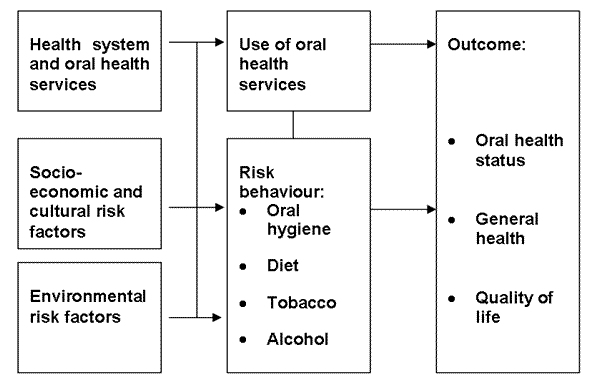Oral health: risk factors
It is now widely accepted that there is a causal relationship between deprivation and ill-health, including oral disease. How this relationship is mediated is less well established. The diagram below highlights the moderating pathways and describes a framework for the 'common risk factor approach' to improving oral health (Sheiham and Watt, 2000). Action can be taken across multiple levels, settings and risk areas.
The common risk factor approach (adapted from Petersen, 2003)

Poor oral hygiene is the main cause of gum disease, and is also implicated in dental decay. Low general personal hygiene is a factor in many conditions of the skin.
Diets high in sugar and fat, and low in fibre and essential vitamins, are associated with conditions such as coronary heart disease, stroke, obesity, diabetes, cancers and dental decay.
Smoking is implicated in many diseases, including cancers of the lung, throat and mouth. In addition, smokers are more likely to have coronary heart disease, diabetes and periodontal (gum) disease, as well as other diseases of the soft tissues of the mouth.
Alcohol drunk in large quantities increases the risk of general conditions such as high blood pressure, liver disease, coronary heart disease and cancers of the mouth. In addition, alcohol is a factor in many social problems, and violence often results in fractures of the jaws and teeth.

